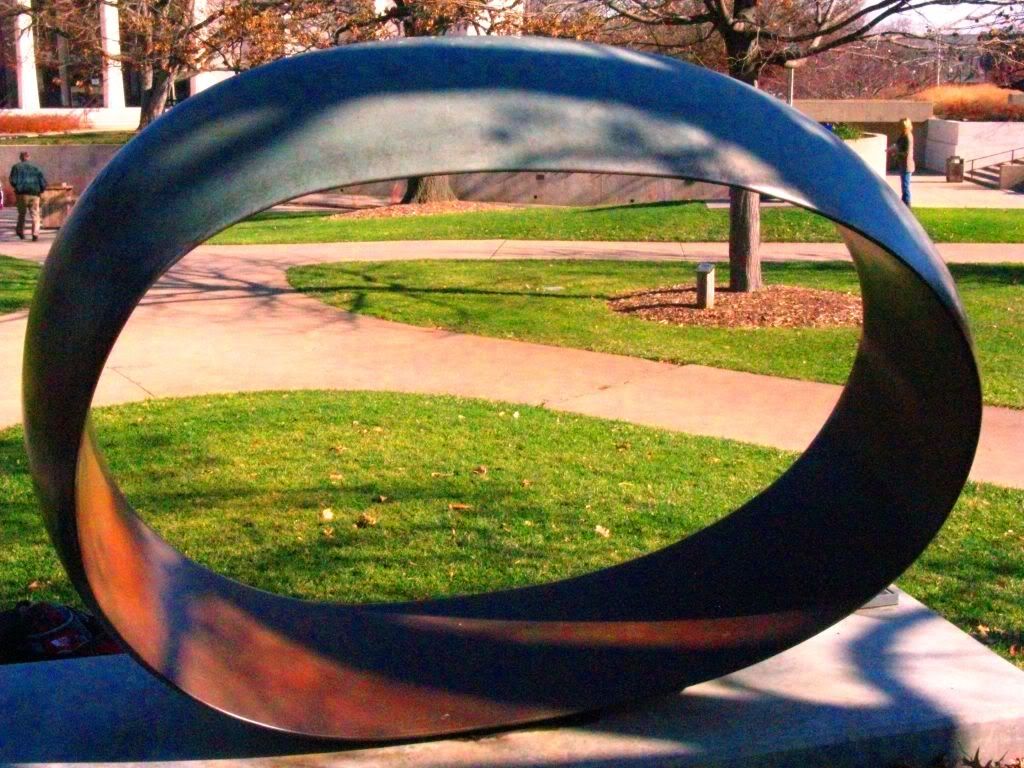The sculpture Fragment X-O by Juan Hamilton appeals to an audience in a variety of ways. First of all, this piece of art appeals to a person’s pathos through its fluid structure and coloration to pull in the emotions of the viewer. This piece also uses logos and ethos to work with the audience to create an argument.
Pathos is the main rhetorical appeal at work. The fluid shape and soft edges of this object evoke a feeling of calmness. However, the dark hues of the bronze also works to induce questioning and mystery among the viewers. The interaction of this piece with the environment in which it is placed is also important to the overall feeling that it creates. The weather creates a distinct look to the piece. When the sun is shining off the bronze, the piece feels much more tranquil and at ease. On the other hand, when Fragment is shrouded in overcast skies or shadows it seems much more ominous and mysterious. These contradictions within the simplicity of the piece are also at work when looking at how it appeals to an audience’s logos.
The logos of the piece is mostly seen in its overall simplicity of shape and placement. It is placed within a simple patch of grass, free from the distractions of any other sculptures. Its large, oversize and dark shape makes it noticeable but also seemingly easy to comprehend. A visual hierarchy is also created by how the fluidity of Fragment contrasts with the sharp edges of the buildings and tree trunks surrounding it. It draws attention to itself by being one of the more circular shapes in the sculpture garden among the sharp edges of the other sculptures. As well, how the title of the piece interacts with the physical portion is important to logos. The title, Fragment X-O, directs the audience towards the emotional side of the piece due to their cultural background of associating X’s and O’s with kisses and hugs, respectively. The word “fragment” makes the audience wonder where the X is to this O, or if there even is one. This title works with the piece to explain what the artist was thinking about when he was creating the piece.
This consideration of what the artist was thinking about plays into how the ethos of the piece is portrayed to the audience. First of all, the polished look of the piece and its official placement in the sculpture garden among other famous pieces gives it credibility. Both of these aspects of the sculpture shows that the artist has experience with the material and allows the audience to trust the artist and what he is working to portray with the piece. The other feature of the piece that works to appeal to the audience’s ethos is how the sculpture focuses the attention beyond the piece itself into the world beyond. It works to frame life within the hole in the center. This focus tells us what the artist (and the installer) wanted us to see besides the piece itself.
All of these aspects of Fragment X-O work to portray an argument to its viewers and allows the piece to work beyond just being art, but also working as a communicator.


